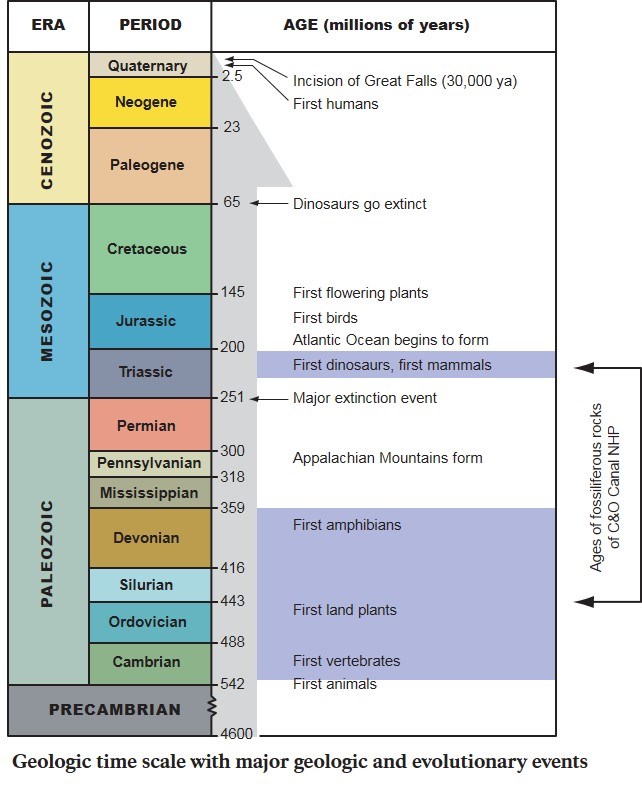|
You might know the Chesapeake and Ohio Canal National Historical Park as a Park that preserves and protects structures of the nation’s historical and cultural past. But did you know the Park also has a geologic past that preserves evidence of life on earth from hundreds of millions of years ago? For millions of years the power of the Potomac River shaped and reshaped the valley in which the C&O Canal NHP now lies. Rock formations exposed by the erosive force of the Potomac's flow provide a window into the continent's geologic past, a time when North America collided with continents that now lie across a vast ocean. Some of these rock formations were originally formed at the bottom of the sea. The Potomac also showcases other geologic features and processes, including the Great Falls of the Potomac, fossils, and natural habitats such as bedrock terraces and river scourbars formed by the shifting sands of geology. You can read the full report on the geology of the park here https://pubs.usgs.gov/pp/1691/.

Rocks exposed in the C&O Canal NHP range in age from about 200 million to over 1 billion years old. The oldest rocks in the park started as igneous or volcanic rocks. They were changed into metamorphic rocks by intense heat and pressure as continents collided and separated several times; these rocks do not contain fossils. When the Appalachian Mountains were formed about 290 million years ago, the collision of continents on the east coast produced the many examples of folded rock layers that are evident along the C&O Canal.
During the early part of the Paleozoic Era (542 to 251 million years ago) however, much of what is now the mid-Atlantic region of the United States was covered by shallow seas. This area was similar to the modern Caribbean Sea, filled with rich marine and reef communities. Fossils of animals that lived in those seas are preserved in limestone and sandstone in and around the C&O Canal. Sedimentary rocks like these were formed by layers of sediment, sand and plant and animal material that hardened over many years. They have not endured heat and pressure so we can still see the fossils within them. Since limestone and sandstone are good building materials, they were quarried from areas near the canal to construct its locks and aqueducts. Stones used in building the C&O Canal contain fossils that can be seen in numerous historic structures in the park. While you are hiking along the towpath keep your eyes open for some of these stones and formations and consider the ancient story they tell.
|
Last updated: January 6, 2018
